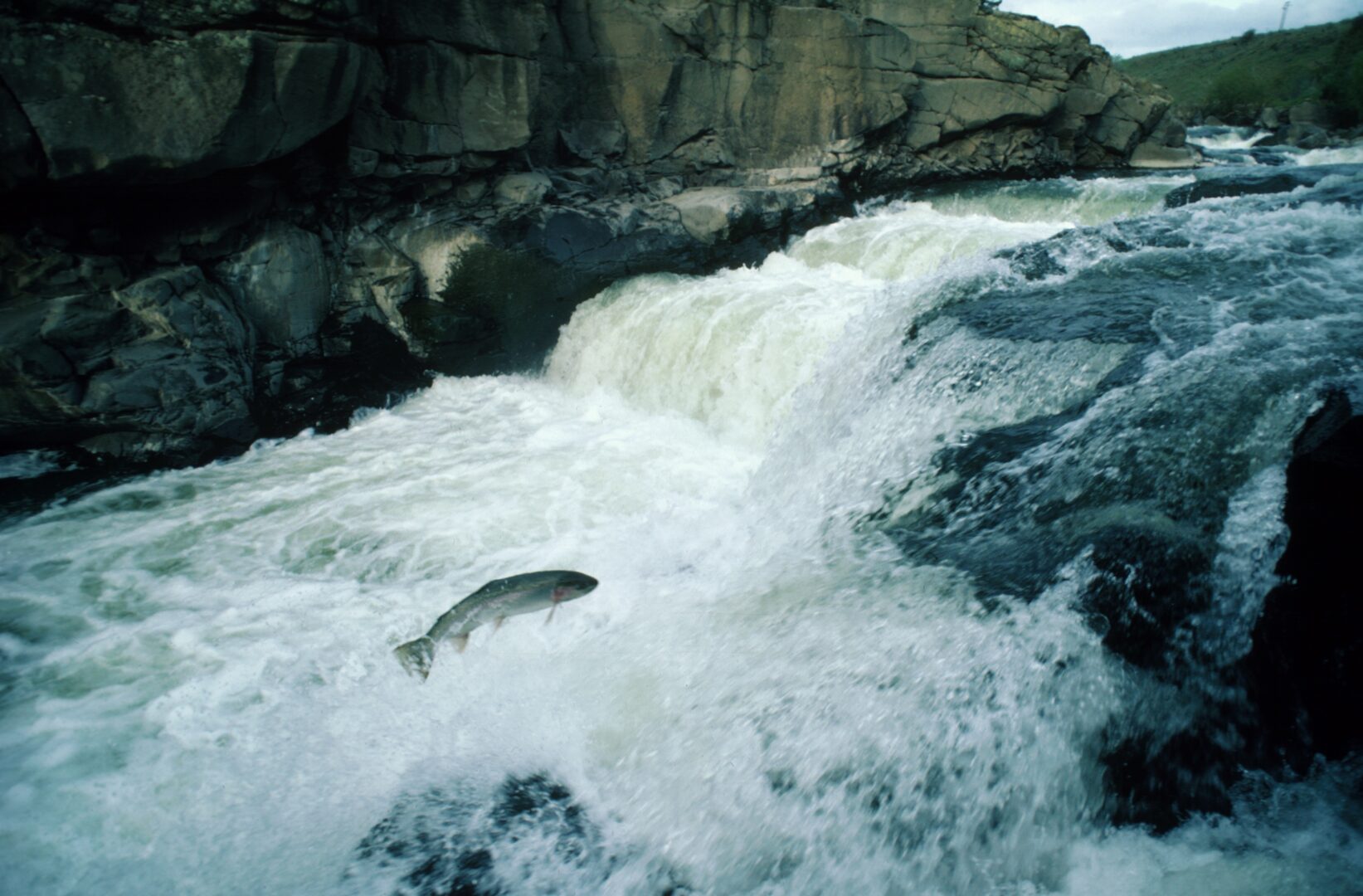We are participating in the federal reviews of two important pieces of legislation: the Fisheries Act and Navigation Protection Act
Healthy fish habitat is essential for healthy fish populations, and by extension, for thriving fisheries. Canada is bordered by three oceans, is home to the world’s longest coastline, has an abundance of freshwater, and supports some of the richest aquatic biodiversity on the planet. It’s clear to see that the responsibility to protect Canada’s oceans and waterways from the pressures of development, over-fishing, pollution, and climate change is paramount.
That’s where the Fisheries Act comes in. Enacted in 1868, it is Canada’s oldest environmental law, and the principal federal statute that manages Canadian fisheries resources. Though far from perfect, the Fisheries Act had always included provisions that directly protect fish (habitat protection provisions were added in 1977) and worked together with the Navigable Waters Protection Act to provide fairly robust protection to waterways and aquatic ecosystems throughout Canada.
But that’s not the case anymore, due to changes to the law made in 2012. So when we heard the federal government had tasked Standing Committees with reviewing the effectiveness of habitat protection under the Fisheries Act and modernizing the Navigation Protection Act, we jumped at the opportunity.
To add some context for those who are unfamiliar with what changed in 2012, here’s some background. Instead of moving forward towards necessary improvements in the Fisheries Act, the Harper government enacted amendments in two successive omnibus budget bills that significantly weakened fish habitat protections. This change was part of a broader suite of amendments to federal environmental legislation, including the Canadian Environmental Protection Act, the Canadian Environmental Assessment Act, 2012, the National Energy Board Act, and the Navigation Protection Act.
Specific amendments to the Navigable Waters Protection Act, now dubbed the Navigation Protection Act, eliminated oversight and approval requirements for works impacting navigation on over 99 per cent of Canadian waterways, and axed the requirement for environmental assessment on the remaining waterways.
We know the powerful role these two laws played in the protection of our environment, and want to ensure we can offer our unique perspective on how they can be improved.
This month, we testified before the Committee and had a surprisingly exciting time – with many questions coming from the members. It is clear that some Committee members are keen to maintain the reduced scope for habitat protection, while others were genuinely troubled by our testimony about our experience with reduced federal oversight and failure to enforce – in particular our evidence that not a single charge has been laid under the new narrower serious harm to fish provision.
Our submissions laid out our concerns and specific recommendations for necessary improvements and changes to both the Fisheries Act and modernizing the Navigation Protection Act.
How to modernize the Fisheries Act
We would like to see the following five key changes implemented in a stronger and modernized Fisheries Act in order to achieve broad, precautionary and enforceable legal protection for fish habitat.
1. Habitat protection needs to be broad:
Without fish habitat there are no fish. Directly protecting fish habitats from the many types of activities that can impact them is an essential aspect of modern fisheries legislation.
2. Habitat protection needs to be precautionary:
As per the precautionary principle, lack of full scientific certainty should not be a reason to postpone preventative measures, and it denotes a duty to prevent harm even when all the evidence is not known. This is an established principle of international environmental law recognized by Canada and is included in many modern Canadian environmental statutes, yet not in the Fisheries Act. We would like to see the precautionary principle in the Act to guide decision-making and specifically for decisions regarding habitat protection.
3. Discretion to authorize harm to habitat needs enforceable limits:
A broad prohibition against harming fish habitat would require provisions to authorize harm in some contexts. The power to authorize harm to fish habitat must be guided by legislated scientific principles for science-based considerations including:
- cumulative effects on fish habitat from individual authorizations;
- long-term ecosystem stability;
- the habitat needs for struggling or recovering fish stocks and aquatic species at risk; and
- the anticipated effect of climate change on the habitat.
4. Habitat provisions must address cumulative harm to and loss of fish habitat:
The current habitat protection provisions do not allow for consideration of cumulative effects of multiple activities on fish habitat. Up until 2012, cumulative effects of individual proposed activities were considered as part of the environmental assessment that preceded an authorization for harm being issued. Since the amendments, authorizations of Serious Harm to Fish no longer trigger an environmental assessment. The Act should ensure that all activities that may harm fish habitat require authorization or a permit, with consideration of cumulative effects a mandatory factor. There should also be set science-based precautionary thresholds and objectives for fish habitat at the watershed and ecosystem levels before issuing individual authorizations in a watershed or ecosystem.
5. Fish habitat protection provisions must be enforceable and enforced:
Monitoring and enforcement is essential to an effective regulatory regime. There have been no charges laid since the Serious Harm to Fish provision came into force. The Serious Harm to Fish provision should be amended to clearly protect fish habitat, and ensure that the offence reflects the need to take a precautionary approach to habitat protection by not requiring proof of permanent harm or harm to the productivity of the fishery. As well, provisions should be added that allow concerned citizens to request investigation into an alleged fish habitat violation, and/or those acting in good faith to take action in the courts to enforce the Act where the Department of Fisheries and Oceans is unable or unwilling to do so.
How to update the Navigation Protection Act
Ecojustice has made the following recommendations for the Navigation Protection Act (NPA):
1. Restore protection of all navigable waters:
Protection under the NPA, now found in a schedule to the Act, lists only three oceans, ninety-four lakes, and sixty-two rivers. Prior to the amendments, approximately 40,000 lakes and over 2,000,000 rivers had been protected. This means that over 99 per cent of Canada’s waterways are no longer subject to regulation and oversight under the NPA. Revisions to the NPA should restore these lost protections.
2. Restore environmental assessment requirements in appropriate cases:
Navigation and the environment are two highly interconnected areas. Permitting works that can impact navigation quite often results in environmental impacts (e.g., works in waterbodies, crossings, dams, etc.). These changes were made as a move against a perceived over-expansion of the NWPA beyond its original purpose for navigation. However, environmental assessment is not just limited to legislation where the underlying goal is environmental protection but is broader and exists to mitigate both incidental and cumulative effects. Going forward, all major projects should be subject to Ministerial approval and automatic assessment regardless of which body of water they take place on. The amendments should also ensure effectively integrated attention to biophysical, social, and economic considerations, which can be accomplished by subjecting projects to a public review process where all issues can come to light.
3. Protect public rights and public trust:
Public rights such as navigation are central to the public trust doctrine, which is a legal concept that holds that certain natural resources are so crucial that they cannot be privately owned and are instead held by the government in trust for the benefit of the public and future generations. The 2012 amendments negatively affected these public rights and the conception of a public trust by removing the public’s voice from the process via the scaling back of protection and assessment. Aboriginal rights have also been affected. Restoration and modernization of the NPA requires that environmental impacts are assessed and mitigated, and that values other than navigation be balanced in the approval process.
Looking ahead
These reviews are a unique opportunity to ensure that 2017 sees a much improved Fisheries Act and Navigation Protection Act. We want Canada to be proud of its strong and modern environmental legislation that is effective in protecting our precious aquatic resources now and well into the future.
So like always, we will be keeping a close eye on the government’s next steps towards making that happen.
You can read Ecojustice’s Fisheries Act submission here.



